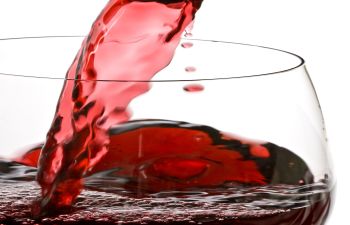
If you enjoy a glass of wine to relax at the end of the day, you need to understand how your teeth may be suffering the consequences. While it is easy to see how red wine can stain your smile, it may surprise you to learn that white wine can be just as threatening. Here is a closer look at how wine can negatively affect your teeth over time.
Colors and Pigments
When it comes to tooth stains and red wine, the main culprit is pigment-producing substances called “chromogens.” Chromogens stick to the enamel (outer tooth layer) of our teeth and stain them with their dark color. To make matters worse, the tannins found in red wine are known for helping these pigments bind to the teeth.
Acidity
A less obvious but equally concerning issue with wine and teeth is its high acidity. Both red wine and white wine have acids that can erode tooth enamel. Not only do we need enamel to protect the health of our teeth, but this outer layer is the white part of our teeth. When it wears thin, the yellow dentin layer can be more visible. Therefore, you may find that if you are a white wine drinker, your teeth appear dingy or yellow. Don’t be fooled by the myth that red wine stains the teeth but white wine can whiten them. All types of wine have acidic effects that can discolor teeth in an unwanted way.
Normal Wear and Tear
The body naturally breaks down as we age; this includes our teeth. As you get older, it is common to experience microscopic cracks in your teeth. While you may not notice these tiny cracks when you look in the mirror, they allow the chromogens and tannins of wine to penetrate deeper into the tooth and leave behind harder-to-clean stains after you drink.
Protecting Your Smile from Wine
Can you retain a bright white smile and still enjoy a nightly glass of wine? Of course. However, you may need to adhere to the following tips to protect your teeth:
- Don’t brush right away. The acids from wine can be too abrasive for your teeth if you brush too soon. Instead, wait about 30 to 60 minutes to brush or pair you wine with cheese to neutralize the acids in your mouth and make them less harmful.
- Drink through a straw. Most people would prefer to sip their wine instead of slurp it through a straw. However, using a straw can minimize the contact that red or white wine has on your pearly whites.
- Don’t linger. Again, slowing sipping wine is part of the experience. You should know, however, that the longer you allow wine to stay in your mouth before swallowing, the more chances it has to stain and damage your teeth.
To learn more about how your eating and drinking habits could be affecting your smile, please call Smiles by Seese. If your teeth have already suffered from wine stains, ask us about our professional teeth whitening options!
Posted on behalf of
610 Jetton St. Suite 250
Davidson, NC 28036
Phone: (704) 895-5095
Email: info@smilesbyseese.com
Monday (once/month): 8AM – 5PM
Tuesday - Thursday: 8AM – 5PM
Friday: 8AM – 3PM
